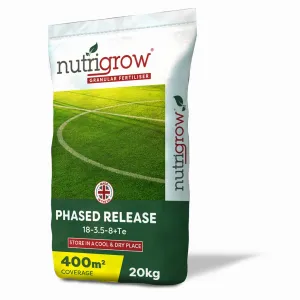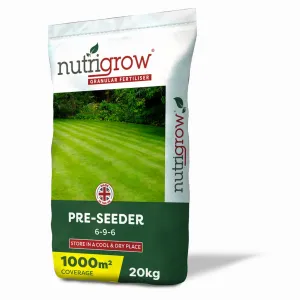For most lawns, an application of fertiliser in spring, and again in autumn is often enough. However, hardworking, stressed, or nutrient poor lawns may well require four or five applications a year.
There are a few factors that will influence how frequently you should feed your lawn. These include:
Your Lawn Soil
Do you know the nutritional make up of your lawn soil? If not, or you have any concerns, it may be worth conducting a simple lawn soil test.
Lawns growing on nutrient poor soils may well require more frequent fertilising than richer soils. A soil test is quick and easy to complete and will help give you a better understanding of what’s beneath your grass.
A soil report will indicate levels of phosphate, potassium, magnesium, and the soil pH, as well as trace elements like sulphur, zinc, boron, manganese, iron, copper & organic matter content.
This means you’re able to select the perfect fertiliser for your lawn – tailored to the soil’s specific needs.
Your Specific Species of Grass
Broadly speaking, rye grasses and fine fescues tend to be more robust than other grass cultivars that may require more nutritional attention through the year.
More demanding cultivars include bentgrasses, particularly creeping bentgrass - often used on golf courses for its extremely fine texture and dense growth. To achieve this refined look, this type of grass requires significant amounts of nitrogen and frequent but precise fertilising.
Kentucky bluegrass and bermudagrass both require more fertilising than rye grass varieties due to their colour and speed of growth.
Type of Fertiliser – Instant or Slow / Phased Release
If you have used a slow release or phased release fertiliser to date, all things being equal you probably only need two applications a year.
This is because slow-release fertilisers are designed to deliver nutrition over a longer period of time – often up to 8 or 12 weeks.
So if you apply another dose of fertiliser too soon, you may be delivering too much nitrogen to the grass which can cause scorch.
Having said that, you can deliver more frequent doses of slow-release fertiliser if you use it at a lower dosing rate. It’s always best to take advice on the correct rate for your needs, especially if fertilising is new to you.
Extra Treatments for Stressed Lawns
If your lawn has experienced a period of stress - flood, drought, or exposure to disease - it may require an extra dose of fertiliser to bring it back up to speed.
Drought is a particular problem for lawns. When there is not enough moisture in turf soil, nutrients can struggle to 'move' through the grass.
So if you applied fertiliser in the spring and were not planning on another application until autumn, but you have experienced drought in early summer – don’t wait until autumn! Fertilise it as soon as the soil has softened – either through watering or returning rain.
Nutrigrow Phased Release 18- 3.5- 8 + 1Mg is an organic based, high quality NPK fertiliser with magnesium designed to support maximum nutrient uptake and is a perfect post-drought fertiliser.
Conversely, lawns that have been exposed to flooding also require extra attention. Once the water has subsided, aerate your lawn and then treat it with Magnesium Sulphate Bittersaltz - a powerful mix of magnesium and sulphur to help your grass recover and green up. It can also be used at any time of year.
Lawn Use
Simply speaking, lawns that receive a high footfall (or lawns that require a deep green even colour) will need fertilising more frequently.
A low maintenance lawn with low footfall is likely to only need two basic feeds a year.
If you are starting a new lawn or over-seeding an existing lawn, use a pre seed fertiliser. These tend to have low levels of nutrients that will prevent scorch on young grass.
Mowing Practices
If you bag your grass clippings, you are removing nutrients from the lawn, which might necessitate slightly more frequent fertilisation to replenish them.
If you "mulch" your clippings back into the lawn, you return some nutrients (especially nitrogen), which can slightly reduce your overall fertiliser needs.
In summary, lawns that receive the correct nutrition use water more efficiently and are less susceptible to disease. By assessing your own lawn against the above factors, you should be able to identify how frequently to fertilise your lawn.
If you have any questions or concerns, please feel free to contact our technical team for free specialist advice.










